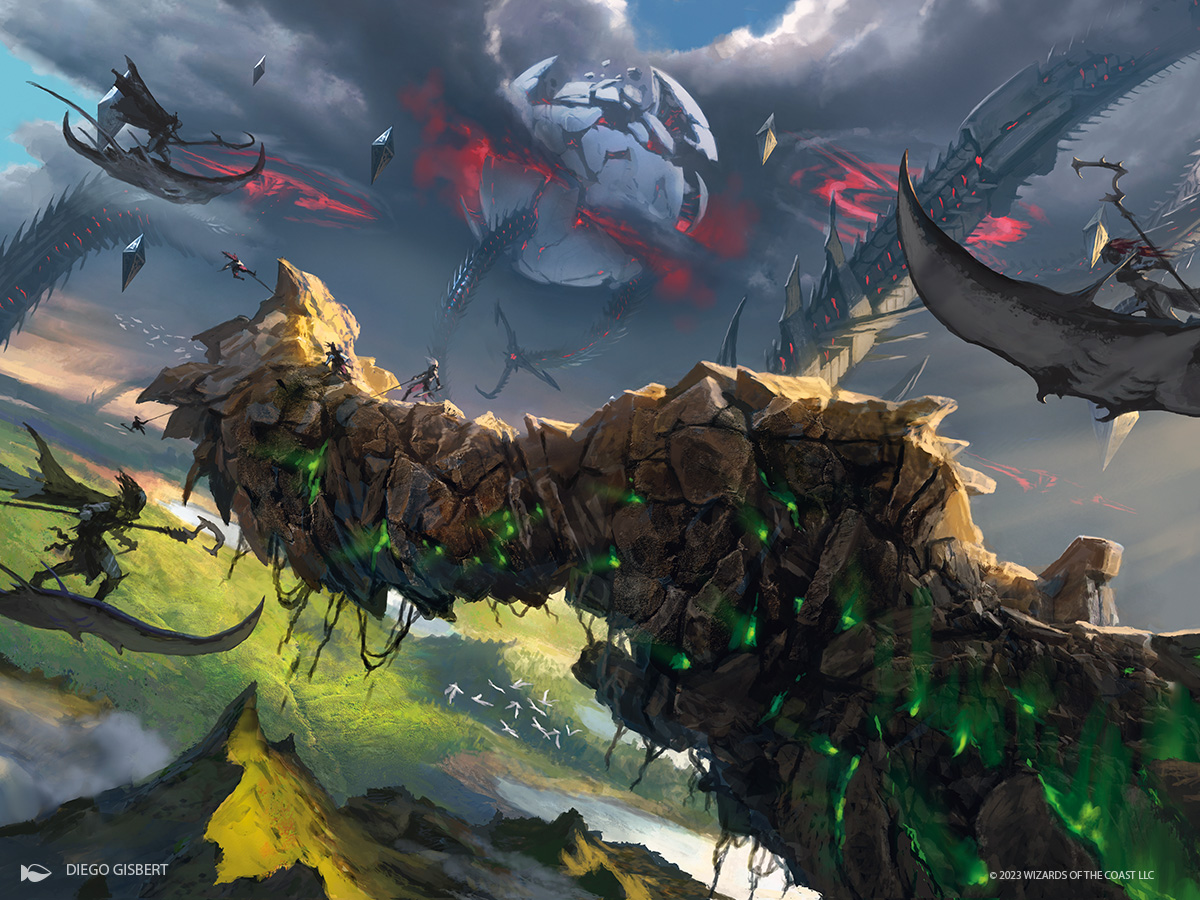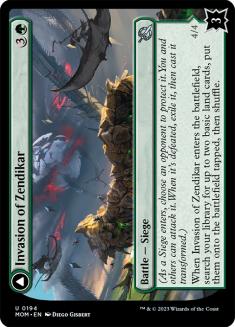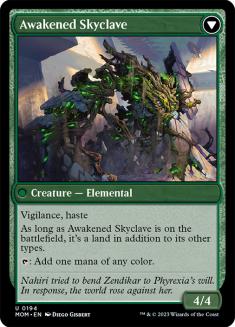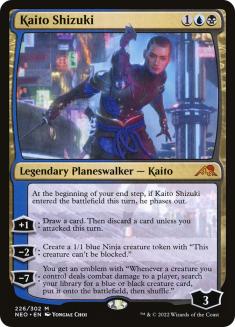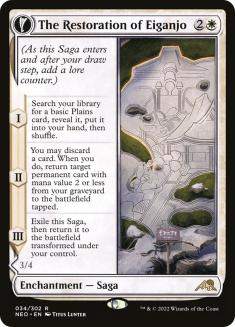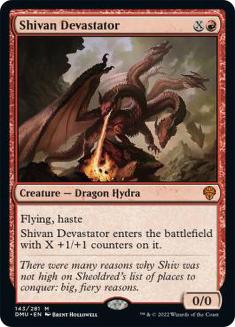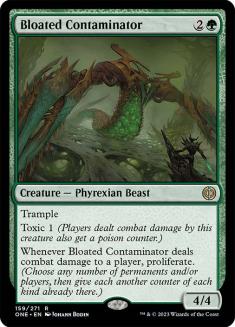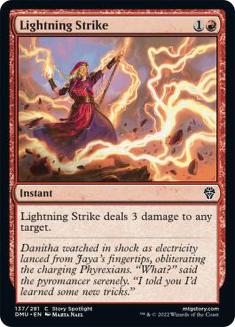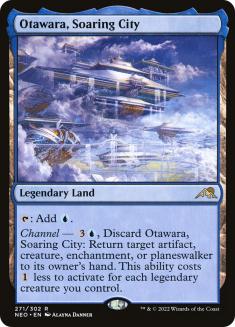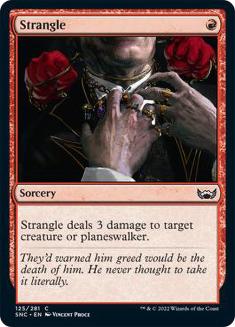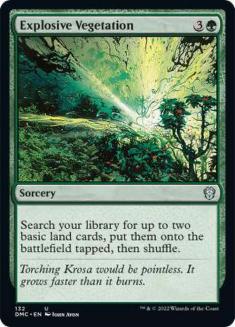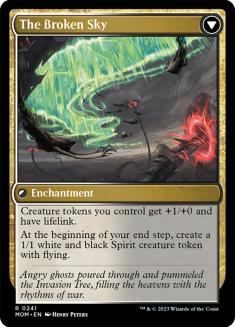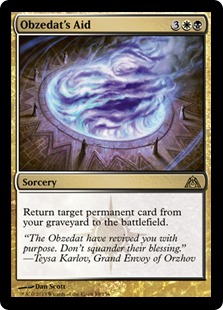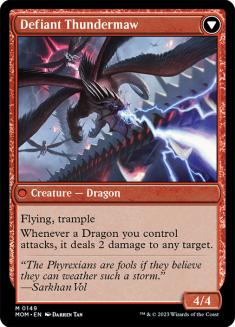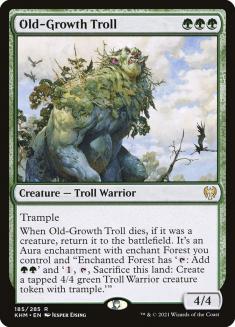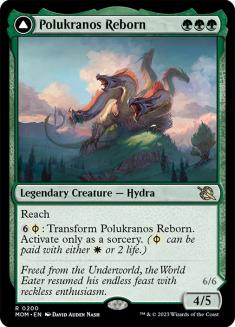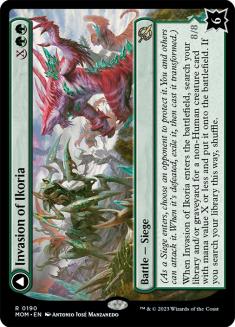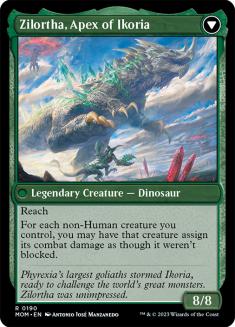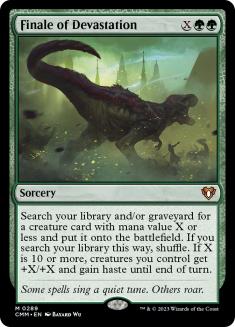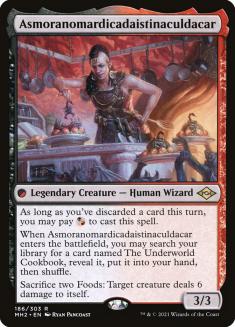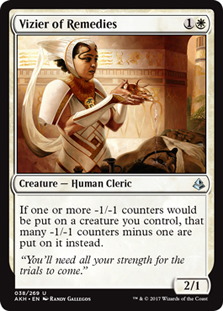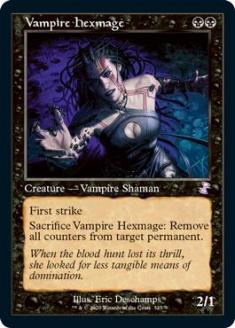March of the Machine would be a jam-packed set by any normal standards – and this is no normal set. On top of some ambitious crossover episodes, new frontiers in confusing DFCs, and the culmination of Magic’s grandest storyline, we have the first new card type since Lorwyn introduced planeswalkers (…and tribal!) over fifteen years ago. There has been intense speculation about battles ever since Atraxa, Grand Unifier teased their existence, and we finally have our first taste of them.
Battle Basics
Let’s look at an example:
‘Siege’ is the subtype that all this set’s battles share. All Sieges are battles, but not all battles are Sieges – a battle’s subtype determines the rules for attacking it and the next batch of battles may work differently.
A battle enters the battlefield with the number of defense counters indicated in the bottom right corner, and this functions similarly to toughness for creatures or loyalty for planeswalkers. Your creatures attack your battle directly; the opponent chosen to defend it (always your opponent in a two-player game) can block. You can also use direct damage spells or other spells that say ‘any target’ or specify battles to interact with them – in red, direct damage spells that restrict their targets seem to be split between ‘creature and planeswalker’ or ‘player and battle.’
Once the last defense counter is removed, you exile the battle and then attempt to cast the back side. This will have the mana value of the front side and card type of the back side (so Awakened Skyclave is a creature spell with mana value four). As with other DFCs, effects that look for a specific card type will see a battle on the front side; you can’t pick up Invasion o Zendikar with Blood Fountain.
Scion of Sagas
Battles are a spiritual successor to Sagas and planeswalkers, both also busy breaking new ground in this set. The fixed progression of Sagas (unless they have Read ahead) gives a shape to the game but limits the subtype’s flexibility. Planeswalkers theoretically offer welcome incentives to control creatures and enrich combat, but the automatic advantage of simply controlling a planeswalker turn after turn means that a game can quickly become all about them, and throwing your resources into defending one becomes an easy call.
This new card type may represent a happy medium. You get the ‘spell’ stapled to your battle right away and have to work to unlock the rest – but if you succeed, the payoff is immediate and often dramatic. There’s some concern that battles further reward being ahead on the battlefield already and allow you to press your advantage too easily, but that feels like a fundamental feature of Constructed Magic at this point – those complaints predate even planeswalkers.
Tackling Battles
With battles in your deck, you have more reasons to care about the size and text of your creatures. Evasion and trample become more appealing, while haste lets you set up sudden swings that overwhelm what looked like an adequate defense. Note that you can proliferate the defense counters on an opponent’s battle to extend that fight!
Anything that damages any target now has even deeper modality. Cards like Lightning Strike are the big winner here – these rarely show up in midrange decks because you aren’t aggressive enough or heavy enough on burn that Strike is dangerous in that way, and it’s weak as a removal spell as games go long. If Strike can also help to transform a battle, its floor is suddenly much higher.
A new card type leads to odd mismatches with older removal. Otawara, Soaring City in particular stands out as a universal answer to nonland permanents that now has a potentially glaring weakness. Spells like Strangle that avoided players for good reason but had the flexibility of hitting planeswalkers now have another class of cards they wish they could hit.
Invasion of Zendikar
Invasion of Zendikar is already more inspiring than the entire set Battle for Zendikar. Explosive Vegetation was a recurring Standard hit, but recent variants like Migration Path fell flat. I’d argue this was because of the incredible quality of other ramp (or effects like Fires of Invention that just ignored the mana system entirely) that it shared most of its time in Standard with, rather than the Explosive Vegetation baseline aging poorly.
Atraxa, Grand Unifier wasn’t just a sign of things to come, it’s the perfect follow-up to Invasion of Zendikar ramping you to seven mana with the right spread of colours by Turn 5. We just saw a Regional Championship won by a deck featuring Atraxa and Herd Migration – another match made in heaven for this style of ramp.
In a shell like that, you won’t awaken many Skyclaves – but that’s fine! With most of these battles at higher rarity, you treat the battle itself as a reasonably costed spell and the back as a stretch goal that comes up sometimes but isn’t a big part of that evaluation. With others, the battle gets your foot in the door, but what you really care about is completing the subquest and transforming it. That in turn informs how much you embrace the incentives discussed above to play more creatures generally and creatures with appealing stats or abilities. This variety in play patterns and design choices should keep the battle experience engaging even after the novelty of the card type has worn off.
Where’s the Payoff?
Two more rare battles highlight this contrast:
I built more Obzedat’s Aid into Omniscience decks than I should have back in the day, and that rate for that effect makes sense if you can cheat out something impressive. Invasion of Tolvada gets you that up-front – with an arguably disappointing bonus on the back side. Invasion competes with or complements The Cruelty of Gix as a reanimation spell for Atraxa but is also a battle to find with it, freeing up the enchantment column for Fable of the Mirror-Breaker.
At the other extreme, Invasion of Tarkir is all about training your Dragon. The front is a fine removal spell that gives you time to work towards winning the battle, but nobody’s getting excited about Omen of the Forge. You pick this battle because you hope to have enough Dragons to win the war – and, since battles aren’t legendary, the second Invasion backed by enough firepower can transform the first.
That’s easier said than done. Dragons of Tarkir worked so well because it gave rise to decks that visibly cared about Dragons without having to run too many of them – and you reach that limit quickly with a creature type known for being expensive finishers. Invasion of Tarkir asks for a lot of Dragons – maybe more than you can handle. Shivan Devastator is a good start, but where do you go from there?
Why Not Both?
Others sit somewhere in between.
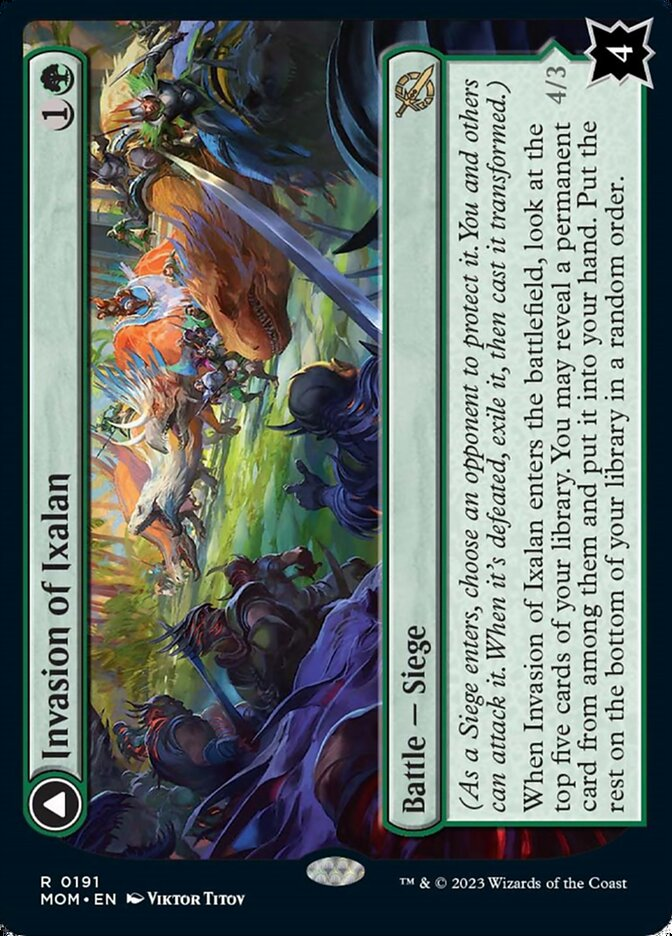
At the time of writing, we don’t have the other side of Invasion of Ixalan – all we know is that it’s a 4/3. Those are decent numbers and a vanilla 4/3 would be a fine bonus, but in context it can be much more than that.
Think about this card in Mono-Green Devotion in Pioneer. It can’t repair your draw right away the way Oath of Nissa can, and that one mana difference can be relevant later – but you get what you pay for with Invasion, and five cards is a lot more than three if you need to find something specific. Invasion is less restrictive about card types, too – if none of the other four cards are appealing, you can take a second Invasion and spin the wheel again. If you hit either with Storm the Festival, you’d much rather it be Invasion.
That mysterious 4/3 looks surprisingly attainable – Old-Growth Troll and a new four-power devotion booster in Polukranos Reborn get there in one hit. When you transform and cast Invasion of Ixalan, that 4/3 joins an already impressive battlefield while triggering Kiora and giving you another blocker to defend Kiora or Karn, the Great Creator. That’s more mileage than you’d ever expect from an Oath of Nissa.
Invasion of Ikoria
The most eye-catching battle from these previews is Invasion of Ikoria. There is fierce competition for those few flex slots in Mono-Green Devotion, and this Invasion is yet another card from this set alone making a bid for them. Consider this opening:
Turn 1: Elvish Mystic.
Turn 2: Invasion of Ikoria with X = 1, finding Elvish Mystic.
Turn 3: Play and activate Nykthos with four devotion and use both Mystics to cast Storm the Festival.
Here, Invasion contributes three devotion to green including another mana source, letting you ramp into Storm in a way that previously required several specific cards instead.
Once you have a lot of mana – maybe thanks to that first Invasion – more options open up. Invasion with X = 3 finds Old-Growth Troll or Polukranos Reborn (an excellent mana sink too), adding five devotion; a bigger Invasion can find Cavalier of Thorns.
Invasion of Ikoria in Modern
In Modern, it seems like the non-Human clause so common in Ikoria makes Invasion of Ikoria dead on arrival. The two mainstream decks that want Finale of Devastation use it to find Asmoranomardicadaistinaculdacar to set up their Food production or Vizier of Remedies to combo with Devoted Druid, and both of these are Humans.
Instead, Invasion of Ikoria has a self-contained combo that adds a very powerful default option. Buried deep in the Modern card pool is Vampire Hexmage, which can sacrifice itself to remove all counters from a battle and transform it immediately. This means Invasion with X = 2 churns out an 8/8 with reach for four mana – not widely playable in Modern, where creatures that are ‘just’ numbers are useless unless they are also cheap, but useful against the Izzet decks as a threat that actually outgrows Unholy Heat and trades with even the biggest Murktide Regent.
A new card type is a historic moment for Magic, and the first cards with that type set the benchmark for all that come later. The Lorwyn planeswalkers were a triumph of their time – I hope these battles set a similar precedent.

